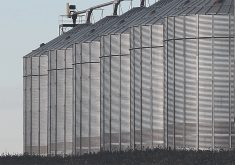WHITEHORSE — The Canadian Federation of Agriculture says agri-environmental requirements under the forthcoming Sustainable Agriculture Strategy could cost billions.
It wants adequate federal funding to make sure that burden doesn’t all fall on farmers.
It also suggested an agriculture disaster relief summit among governments and producers to better plan for extreme weather events before the next agriculture policy framework is developed.
Read Also

Canola oil transloading facility opens
DP World just opened its new canola oil transload facility at the Port of Vancouver. It can ship one million tonnes of the commodity per year.
Both of these were in a draft set of recommendations for the federal standing finance committee discussed at the organization’s summer board meeting in July.
The committee set an Aug. 2 deadline to submit written pre-budget briefs for 2025. Those briefs will be posted on the committee website after they are translated, and all those who submit are considered to have requested to appear before the committee.
CFA executive director Scott Ross said while no one yet knows what the final Sustainable Agriculture Strategy (SAS) will look like, there will be a “quantum of investment” needed.
“Regardless of where that strategy goes, the need for financial incentives, research and extension in the area of environment sustainability, and linked, obviously, very closely to economic sustainability as well, is still critical,” he told the meeting.
“We cannot miss the opportunity to make a call for funding those areas regardless of where the SAS takes us.”
He suggested $2.5 billion over five years as a starting point.
“We’re talking about what should be a very ambitious strategy for sustainability,” Ross said.
“There is a significant government investment, and investment from the private sector, really required if we’re going to come close to achieving targets for 2030, let alone moving forward.”
Ontario Federation of Agriculture director Mark Reusser said the request should be higher.
He said it should be 10 per cent of what American farmers get because Canada is one-tenth the size.
“Otherwise we’re short changing ourselves and the environment, and we’re saying to the government that we can do something that we can’t really do,” he said.
“If we want to do something, it has to be funded.”
That stance was supported by other members, including the Canadian Sugar Beet Producers Association.
“I think instead of looking at what we think we can get, I think we need to ask for what we need,” Gwen Young said.
CFA president Keith Currie said society as a whole needs to help pay for a better environment.
Ross added the strategy has to show a clear path from where the industry is today to how it will meet objectives and targets in the strategy.
On agricultural disasters, Brodie Berrigan, the CFA’s senior director of government relations and farm policy, said a summit is a reasonable request given the concerns about programs such as AgriRecovery.
“This would be the first step towards focusing government’s attention on disaster relief programming specifically and hopefully build some momentum towards the revamp of existing programs to make them more consistent and responsive, or potentially lead to the creation of a new program,” he said.
“We do have a bit of a gap in our (business risk management) suite of programs right now between AgriStability and AgriRecovery.”
The draft recommendations included asking for the Advance Payment Program interest-free limit to be permanently set at $350,000 after this year and indexed to the farm input price index.
“What we’re saying is, it’s kind of ‘set it and forget,’ ” said Berrigan.
“Under extraordinary circumstances, there is no reason why governments couldn’t decide to make a temporary increase, but for several reasons, including operational certainty and planning purposes, we think it makes sense to set it and leave it alone.”
Modernizing the Canada Grain Act, reaffirming the Canadian Grain Commission’s mandate to maintain standards and supporting Liberal MP Kody Blois’ private member’s bill to allow for provisional registrations for products such as pesticides are also recommended.
The CFA wants an interswitching distance of 500 kilometres and extended interswitching available to all North American railways. The current pilot project should be extended for an additional 30 months with a view to permanency.
Berrigan said government could make food security a priority by ensuring transportation of agrifood products during labour disruptions.
There are several recommendations around labour, including that the Seasonal Agricultural Worker Program be maintained and Temporary Foreign Worker programs support pathways to permanent residency. He said the government is considering consolidating all existing TFW programs into one and expanding it to include fish processing, which would be a substantive change.
CFA also reiterated its request to keep the capital gains inclusion rate at the old rate of 50 per cent for farms.
Member organizations want the large animal veterinarian shortage addressed and refundable tax credits for food donations made by all types of agricultural businesses.
CFA also supports keeping supply management off the table in future trade talks while advocating for the elimination of non-tariff trade barriers.
Discussion of what other recommendations should be in the brief included access to antimicrobials.
David Wiens, chair of Dairy Farmers of Canada, said Canadian livestock producers should have access to the widest range of veterinary tools possible.
“Unfortunately due to various barriers, our access to such tools is actually at a crisis point, which is compounded by the fact that a number of currently approved and available tools is eroding at a significant rate,” he said.
“And so the result is that we’re forced to rely on an increasingly limited number of tools to ensure the health and well-being of our animals. Not only does this have implications for animal and human health, it places Canada at a competitive disadvantage compared to other countries who do have access to these tools.”
Those concerns were echoed by others at the table, including turkey farmers and ornamental horticulture growers, who said lack of tools is an industry-wide problem.


















